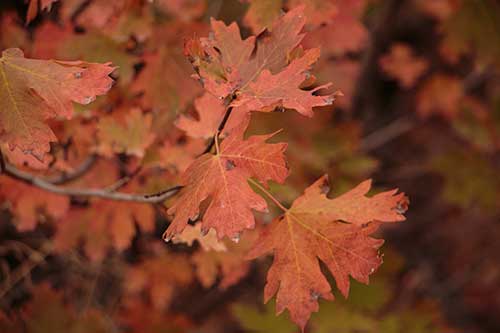Fall is my favorite time of year for photography. Mother Nature puts on a spectacular color display that doesn’t last very long. As the temperatures begin to cool the leaves on the trees start to change into their fall wardrobe, putting on a show that can be amazing. Leaves can start to change as early as late August and can be as late as mid October depending on Temperatures, moisture and other factors, but once the leaves start to change, you can count on the show not lasting very long. Because it is so short lived, it pays to be prepared and with that in mind here are some fall photography tips to help you improve your fall images.
Use a Tripod
I’ve heard all of the excuses, “Tripods are too big, too heavy, take too long to set up, I have image stabilization, I’m not a pro” (one of my favorites) and the list goes on, but using a tripod will ensure that your photos retain all the sharpness and crisp detail that you want in your images. They are well worth the time and effort required to use them. Even a cheap tripod is better than no tripod. Yes, Image stabilization can help, but for the best results be sure to use a tripod.
Avoid Windy Days
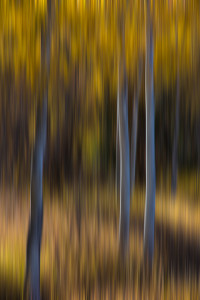
Create Abstracts with Motion blur
The first two tips were all about keeping your images super sharp, and this tip is the antithesis of those. Using a slower shutter speed and moving your camera can create unique and interesting abstract compositions. Alternatively you can do this in Photoshop using the motion blur filter and adjusting it rather extreme – around 200-250 pixels or more. Using Photoshop allows you to fine tune the amount of blur rather than experimenting in the field if you are limited by time.
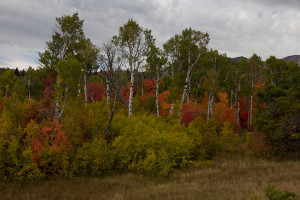
Overcast Days
Overcast days can be great for minimizing the stark contrast you get on a bright and sunny day. Cameras have limited dynamic range and overcast days will help to keep your exposure in check much easier. When shooting on overcast days, try to avoid too much of the bright, white sky – this will create an unwanted focal point in your images since our eyes are drawn to the brightest part of the image.
Use Back Lighting
Back lighting a scene creates an incredible bright color display on bright sunny days. But be careful as the dynamic range of the scene can far surpass the range of our cameras ability to capture light from the brightest to the darkest parts of the scene. Be sure to pay attention to your histogram and avoid exposure with high levels all the way to the left or the right of the graph.
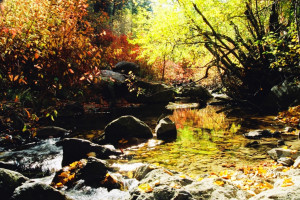
Use Filters
Polarizing Filters
Polarizers aren’t just for enhancing your blue skies. Polarizers are great for minimizing reflections on non-metallic object, cutting through a slight amount of haze, and letting the true colors of foliage show in your images. Leaves have a waxy surface that will reflect the sky and show glare, using a polarizer will cut through this glare and reflection making your colors more vivid.
Neutral Density Filters
Using a slow shutter speed with water creates a beautiful blurred “Silky” water effect, but getting that slow shutter speed can be a challenge. using a neutral density filter will block light, allowing you to use a slower shutter speed. Variable Neutral Density filters are great since you can compose and focus with the filter set to it’s lowest setting, then once your are ready, turn the filter to darken the image.
Enhancing Filters
Enhancing filters are my “Favorite fall filter”. These filters enhance the reds, yellows and oranges in your scene. It’s like Photoshop in a filter. Be sure to set your white balance to the appropriate preset such as daylight, cloudy or set a custom white balance without the filter attached. Otherwise your camera’s auto white balance may try to correct the enhanced colors.
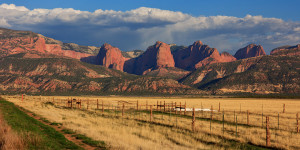
White Balance
White balance allows us to calibrate our cameras to the type of light in our scene, but we don’t always need to match up the white balance to the light in our scene. Setting your white balance to “cloudy” on a sunny day will give your photos warmth with minimal processing required.
Snow with Fall Colors
Typically in the later fall season, but sometimes we get lucky and get an early dusting of snow and this can really give your fall photos a beautiful look. The white snow contrasts with the colors in your scene and helps your colors to really stand out even more. If you see snow in the forecast, don’t put your camera away, but instead embrace the snow and bring home some great keepers.
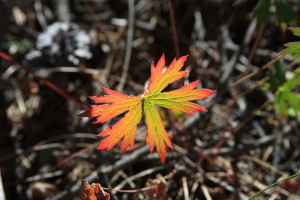
Get Closer
Fall is a great time to shoot wide scenic vistas with the variety of trees showing different colors, but don’t forget to capture the details. Find a perfect leaf and focus on that, find a unique tree against different ones in the background,
Shoot in RAW and Post Processing
DSLR cameras do a good job of providing us with images that look good straight out of the camera, with possible adjustments to color, contrast and hue, but by shooting in RAW not only do you save all of the data the camera captured, it opens up tremendous opportunity in post processing. I prefer to use Lightroom to edit my photos, but there are several RAW editors including the software that came with your camera.
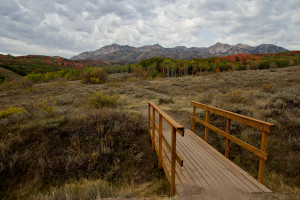
Look for interesting foregrounds
Giving your viewers an “Anchor point” in your images can help to draw them into your scene. Look for anything interesting in the foreground, or add your own interesting thing to the foreground. A picture is a story and all good stories have a beginning, middle and end, be sure to apply this to your photos as well.
Fall Color Reports
Wondering if the colors in the mountains are turning yet? You can drive up and see for yourself, try to find fall foliage reports online, or if you live in an area with ski resorts, you can check out their webcams from the comfort of your home and save your gas for when the colors are better. If you don’t live in an area with ski resorts you might check with the forest service and see if they have a station with a web cam in the area you are interested in photographing. Remember that the trees change earlier at higher elevations, so if you live at a lower elevation that the scene you want to photograph remember if the colors look great at your home, it might already be too late up higher.
Dress Warm / Layers
Not as much a photo tip, but keeping comfortable can help you stay out longer and get more photos. In the fall the temperatures can swing much more dramatically and being prepare for cooler weather is important. Dressing in layers allows you to add and remove clothing to maintain a comfortable temperature no matter what Mother Nature throws at you.

